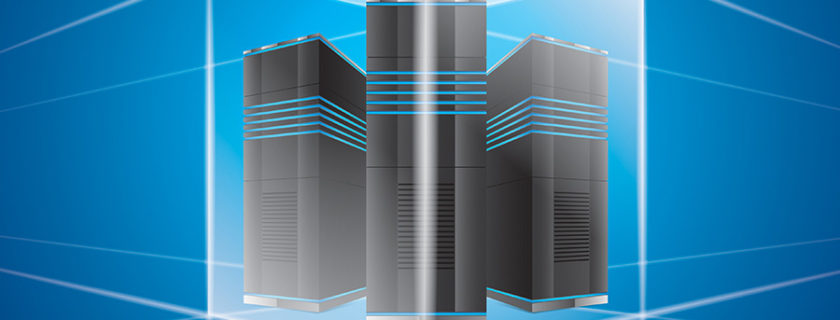From the article:
Are Your Systems Talking to Each Other?
Christine Burke, SVP, Worldwide Sales, RF Code
Why does it matter that there are some inefficiencies in your data center? Or that you don’t always know which equipment is operational? Or that you can’t always show a return on investment for assets or other resources?
Whether yours is a Tier 1 or Tier 4 data center, or your users need continuous access, like in a financial services firm, or not, your data center costs your organization a lot of money. In just energy costs alone, the National Resources Defense Council estimates that U.S. data centers use 76 billion kWh each year at a cost of about $7 billion. Add in costs to build the data center, purchase and maintain servers and equipment, and pay for labor. With current trends of mobile, big data, and the Internet of Things, all information that resides on servers somewhere, and the rise in edge computing and consumers’ insatiable desire for immediate delivery of information, many of these costs are only increasing. Quite likely, you are dealing with increased pressures from the executive suite to deliver uninterrupted services while keeping those costs in check.
Aging data centers can’t keep up with current needs, and while updating facilities or equipment is a critical step, it is not the simple solution to the challenge. What matters most is operational efficiency: How you deploy and manage equipment and resources, and handle environmental conditions. To have truly efficient operations and keep up with the speed of change, you need visibility into what is happening inside your data center.
Do You Know Where Your Servers Are?
The Uptime Institute estimates that 20% of servers are obsolete, outdated, or unused, and that very few data center managers believe their facilities contain these comatose machines. In addition, many servers are not properly maintained, updated, or patched and may draw power without handling any workload – the Uptime Institute estimates that average servers operate at only 12-18% of capacity. These two stats alone mean that data centers are losing millions of dollars due to missing, inactive, or underperforming assets and that a significant number of assets are not delivering value.
The Efficient Data Center
What does an efficient and optimized data center look like? It’s a center that uses real-time asset management and environmental monitoring to deliver continuous and accurate information about all assets for their entire lifecycle. Managers in these data centers understand that their equipment and processes must work together to create optimal efficiency, and that they must automate processes to fully take advantage of their existing resources. They know:
- What actual assets they own – routers, servers, storage systems, security devices, power supplies, backup systems, cooling systems, cabling, etc.
- The location of assets – loading dock, storage room, rack position, repair bench, etc.
- The operational status of assets – whether they are connected to the network, secure, in use and percentage of utilization, or if they are offline for maintenance or other reasons
- The lifecycle stage of assets – knowing when an asset is nearing obsolescence and whether or not it needs to be replaced when it is retired
- Power usage and analytics
- Environmental conditions and cooling requirements
Data center infrastructure management (DCIM) software works closely with asset sensors to ensure that assets are properly monitored and managed in real time. With the proper data, this software provides an understanding of the current state, shows trends over time, and identifies potential issues – like a server that is near the end of its lifecycle or may need maintenance, or environmental changes that would damage assets if not addressed.
Bridging the Efficiency Gap
To ensure that your data center is efficient and delivering optimal return on investments for both assets and ongoing operating costs, every piece of equipment must be visible, monitored, and operating at capacity. To ensure that is the case, you must have access to vital pieces of information about the assets (such as location, repair status, etc.) that enable you to conduct the business of the data center and the enterprise and communicate effectively to the executive suite:
- Financial and business process information such as deployment accuracy, deployment costs, asset retirement planning, etc.
- Data center management information such as rack temperature, cooling and humidity ranges, average asset age, etc.
Without accurate and timely information, it is impossible to efficiently manage and ensure return on data center investments. Real-time operational intelligence – ensuring that your equipment and systems talk to each other, through continuous, real-time asset tracking, management, and environmental monitoring – is the only way to ensure you have full visibility into your data center operations. This type of financial, technological, and business intelligence is what enables you to make critical decisions about operations and technology, protects your investments, reduces costs, and demonstrates to the executive suite the value of the data center to your organization’s bottom line.
Christine Burke joined RF Code in 2017 as Senior Vice President of Worldwide Sales. Bringing more than 20 years of global software sales experience to the company, Christine is tasked with providing strategic sales direction to lead RF Code through this next growth phase. An experienced leader in B2B and technology sectors, she is also responsible for building high-performance sales teams to communicate the benefits that RF Code’s unique IoT solutions offers to data center operators.
Read the full piece at Data Center Today.



